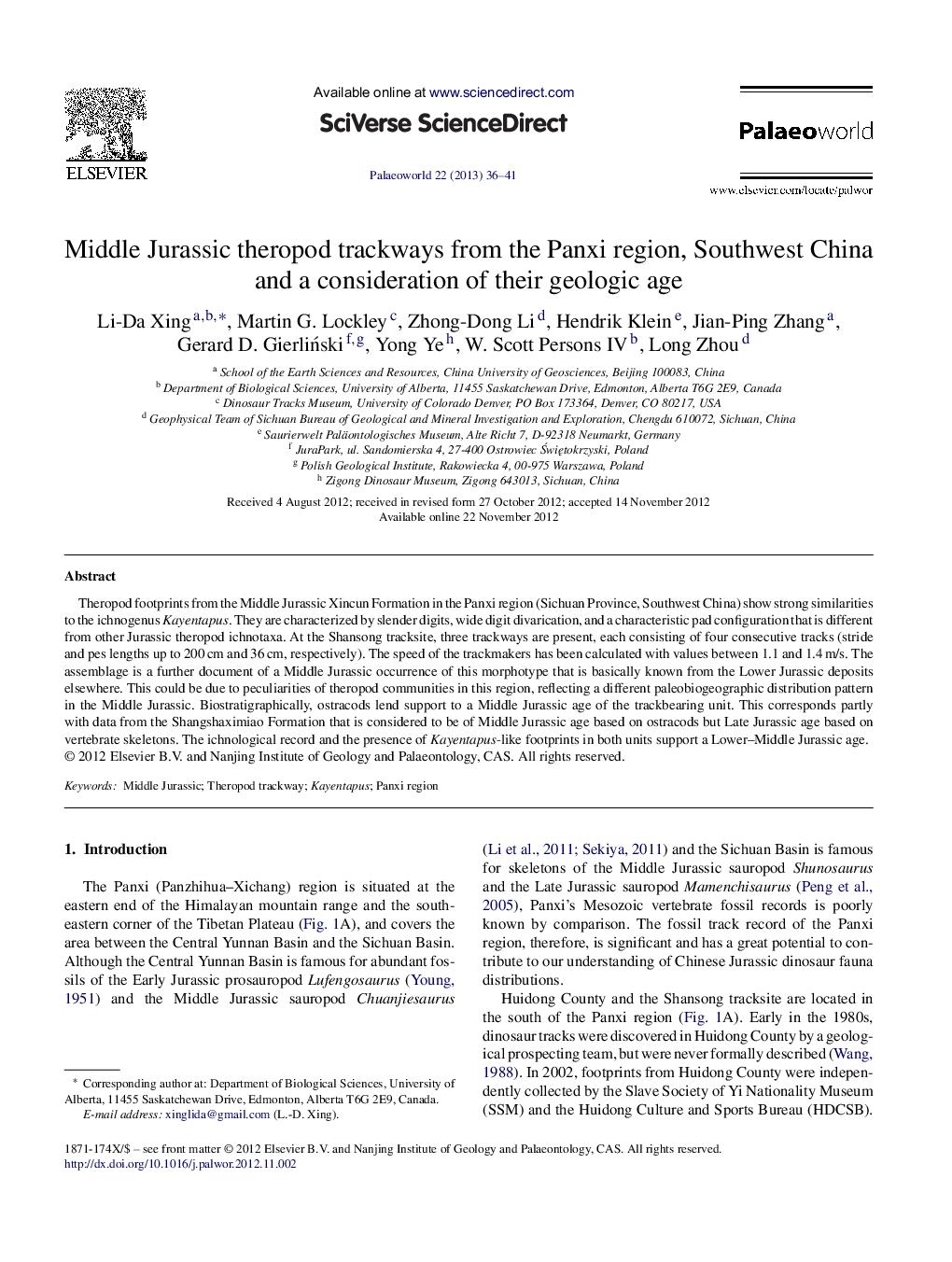| Article ID | Journal | Published Year | Pages | File Type |
|---|---|---|---|---|
| 4749757 | Palaeoworld | 2013 | 6 Pages |
Theropod footprints from the Middle Jurassic Xincun Formation in the Panxi region (Sichuan Province, Southwest China) show strong similarities to the ichnogenus Kayentapus. They are characterized by slender digits, wide digit divarication, and a characteristic pad configuration that is different from other Jurassic theropod ichnotaxa. At the Shansong tracksite, three trackways are present, each consisting of four consecutive tracks (stride and pes lengths up to 200 cm and 36 cm, respectively). The speed of the trackmakers has been calculated with values between 1.1 and 1.4 m/s. The assemblage is a further document of a Middle Jurassic occurrence of this morphotype that is basically known from the Lower Jurassic deposits elsewhere. This could be due to peculiarities of theropod communities in this region, reflecting a different paleobiogeographic distribution pattern in the Middle Jurassic. Biostratigraphically, ostracods lend support to a Middle Jurassic age of the trackbearing unit. This corresponds partly with data from the Shangshaximiao Formation that is considered to be of Middle Jurassic age based on ostracods but Late Jurassic age based on vertebrate skeletons. The ichnological record and the presence of Kayentapus-like footprints in both units support a Lower–Middle Jurassic age.
